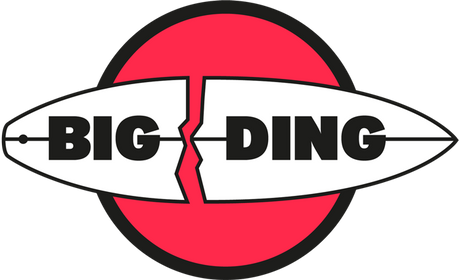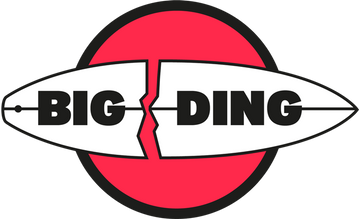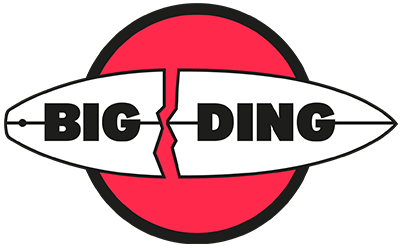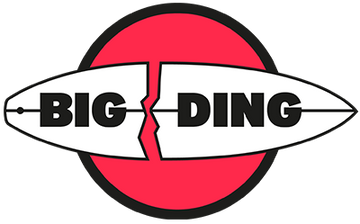Windsurf board repair: How to get your board ready for the next ride!
Windsurfing is not just a sport, it's a passion that connects us directly with the elements. But even the best boards aren't immune to the vagaries of the water. In this article, you'll learn how to repair your windsurfing board yourself and get back on track. We'll go through the steps in detail, from diagnosis to final polish.
1. Diagnosis: Before you start repairing, it is important to identify the exact damage. Cracks, dents or even broken parts may occur. Here you will learn how to perform a thorough diagnosis and estimate the extent of the repair work.
How do I recognize cracks in my windsurfing board?
Identifying cracks in your windsurf board is the first step to a successful repair. Damage can often be subtle, but an accurate diagnosis is crucial. Pay attention to the following points:
-
Visible cracks: Carefully inspect the surface of your board for visible cracks. These can appear on the surface or in deeper layers.
-
Chipping: Sometimes cracks are accompanied by small chips. Look for signs of chipping or uneven surfaces.
-
Pressure test: Gently press on different areas of the board. A soft spot could indicate damage underneath.
Dents or breaks - how do I differentiate between the damages?
Not all damage is the same. It is important to distinguish between dents and breaks in order to apply the correct repair method. Here are some pointers:
-
Dents: Dents are often caused by external influences such as impacts or blows. They are usually deeper and concentrated in a limited area.
-
Fractions: Fractions can take different shapes. They can be straight lines or branching. Check the structure of the board to identify break points.
2. Sourcing materials: Once you've identified the damage, it's time to source the materials you need. From fiber layers to specialty adhesives, here's what materials you need for different types of repairs and what to look for when buying.
Choosing the right fiber layers for your board
Choosing the right fiber layers is crucial for an effective windsurf board repair. Here are the most common types of fiber layers and their uses:
-
Fiberglass fabric: Suitable for repairing cracks and dents. It offers good strength and flexibility.
-
Carbon fiber fabric: For more advanced repairs and reinforcements. Carbon fiber is lightweight and stiff, ideal for structural integrity.
-
Aramid fiber fabric (Kevlar): Is used for areas subject to particularly high stress. Kevlar is extremely tear-resistant and protects against further damage.
Adhesives at a glance - which one is right for your repair?
Choosing the right adhesive is just as important as choosing the fiber layers. Here are some common types:
-
Epoxy resin: Versatile, strong and durable. Ideal for bonding fiber materials.
-
Polyurethane adhesive: Flexible and waterproof. Good for repairs where some flexibility is required.
-
Vinyl ester resin: Resistant to water and chemicals. Often used for repairs in wet areas.
3. Step-by-step repair instructions: This section will guide you through the actual repair process. We'll explain step by step how to repair cracks, dents and broken parts. From preparing the surface to applying the glue, here's how to get your beloved windsurf board back in top shape.
Step-by-step repair instructions: Preparation is everything - Prepare the surface properly
Before you start the actual repair, careful preparation of the surface is essential. Here are the steps you should follow:
-
Cleaning: Remove dirt, wax and other contaminants from the repair area.
-
Sanding: Gently sand the damaged area to create a smooth surface. This will improve the adhesion of the adhesive.
-
Degrease: Use a degreaser to ensure the surface is free of grease.
Layer by layer - How to repair cracks in your board
Repairing cracks requires a layered approach to achieve optimal results. Here is a step-by-step guide:
-
Layer 1 - Fiberglass mesh: Cut the fiberglass mesh to the size of the repair area and apply a layer of epoxy resin.
-
Layer 2 - Fiber layers: Build up further fiber layers, carefully impregnating each layer with epoxy resin.
-
Printing and drying: Press the layers together firmly to avoid air bubbles and let the board dry thoroughly.
4. Tips for advanced repairs: Sometimes repairs are more complex. In this section we give advanced tips for special repairs that go beyond the basics. Whether it's a fin box or a nose repair - here you will learn how to carry out even complex repairs yourself.
The fin box - repair and reinforcement
The fin box is a critical component of your windsurf board. Here are tips for repairing and strengthening it:
-
Diagnosis: Check the fin box for cracks or looseness. Early diagnosis prevents major problems.
-
Repair: Use glass or carbon fiber to repair the fin box. Make sure the glue is waterproof.
-
Reinforcement: To prevent future damage, add additional layers of fiber to reinforce the fin box.
5. Final care and polish: After a successful repair, it is important to properly care for your windsurf board to ensure its longevity. Here we share tips on cleaning, polishing and give recommendations for protecting your board.
Conclusion: Even if your windsurfing board gets damaged, you don't have to go to a professional straight away. With the right instructions and a little manual skill, you can carry out many repairs yourself. Use these instructions as your guide and look forward to the next wave!
Note: In case of serious damage, remember to seek professional help to ensure safety.




